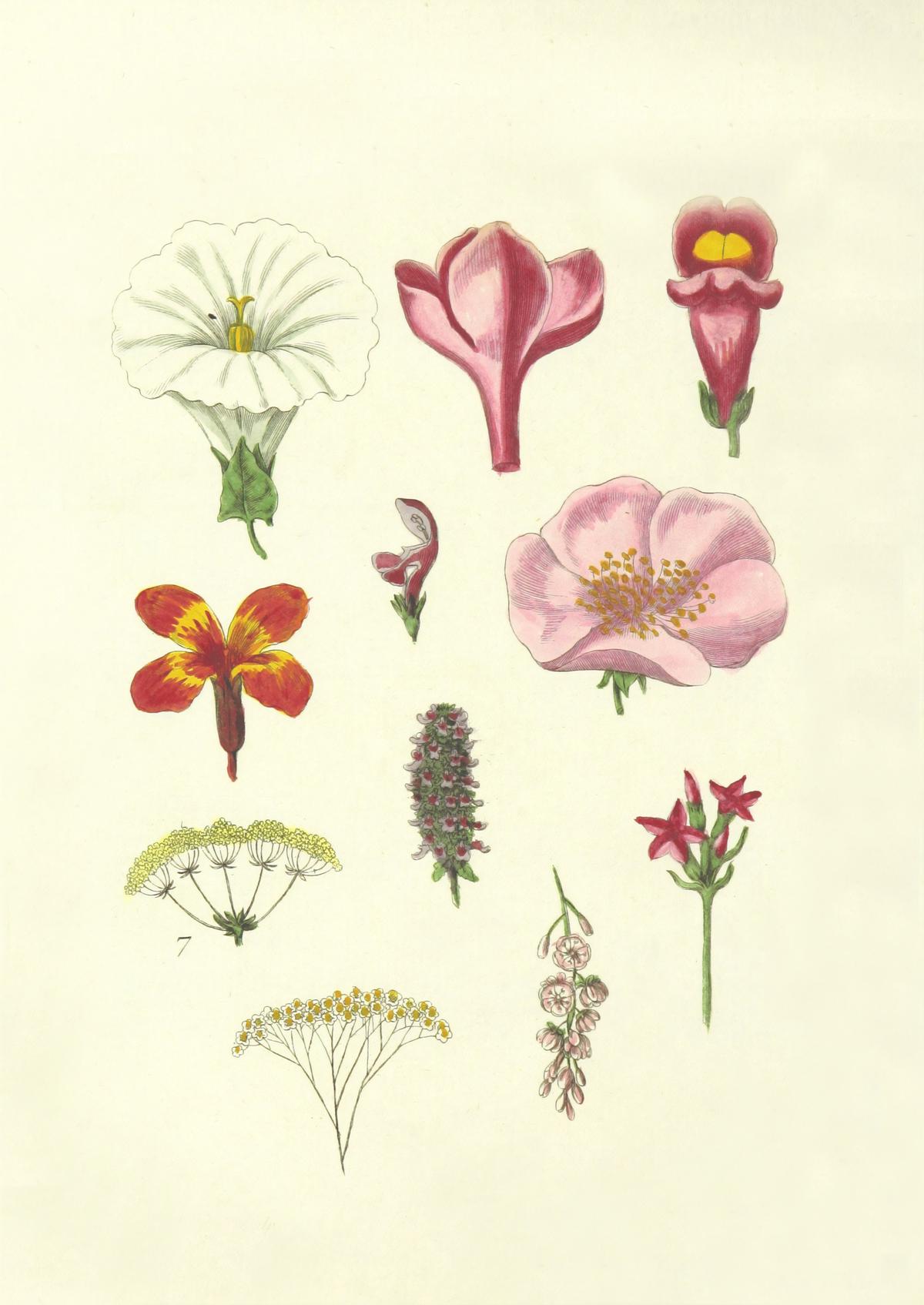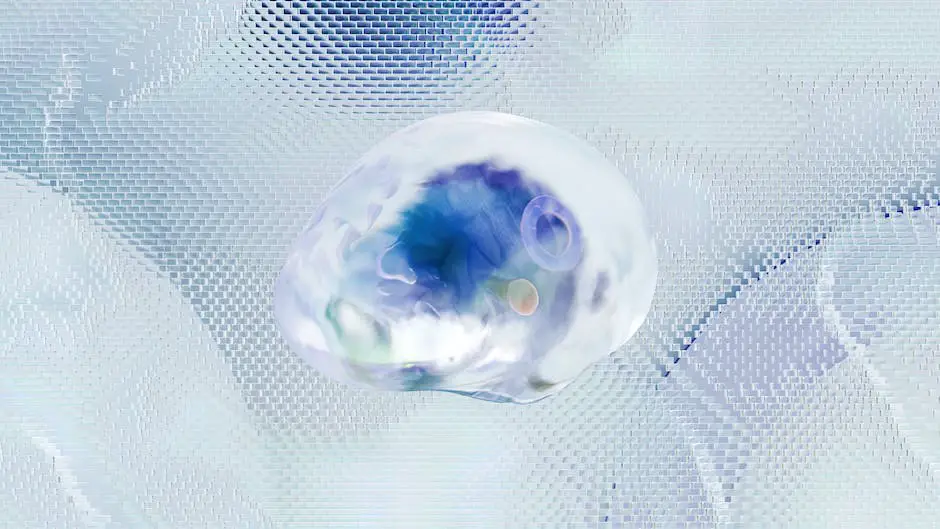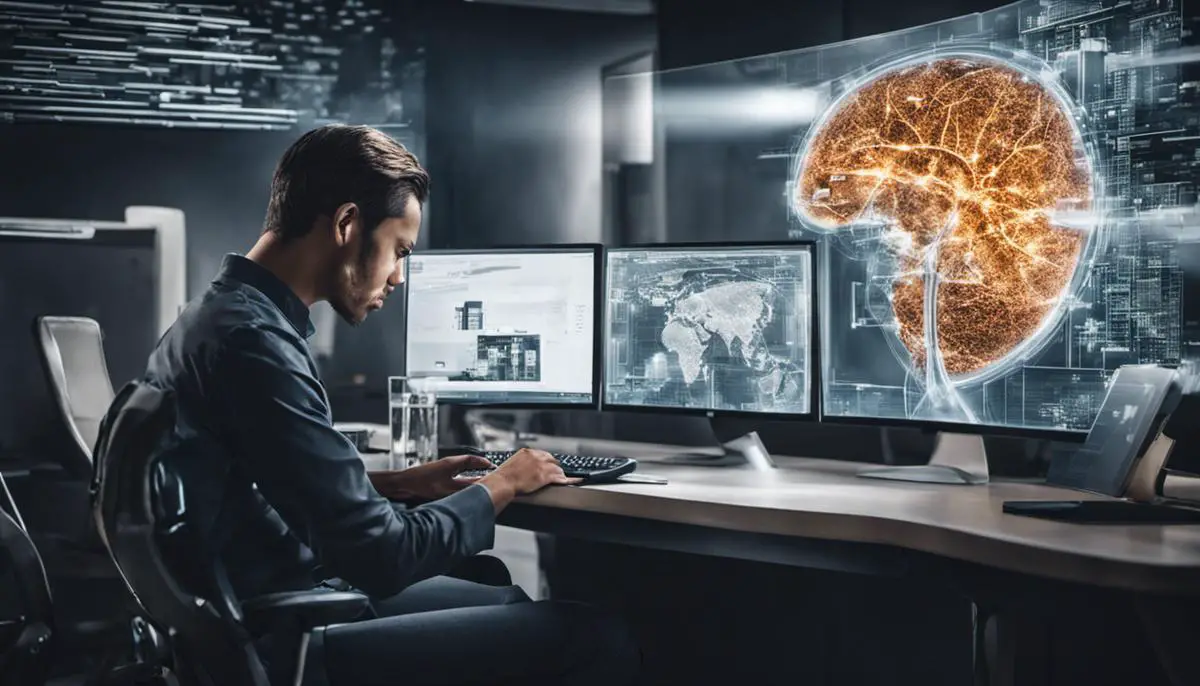As technology continues to evolve at an unprecedented rate, its impact resonates through various industries and disciplines, with image processing being a significant recipient. Artificial Intelligence has revolutionized image processing, expanding its potential and unleashing a myriad of possibilities within various fields.
The journey starts with an understanding of the basic principles of Artificial Intelligence and its implications in image processing. Coupled with deep diving into the innovative implementation of Deep Learning and Convolutional Neural Networks (CNNs), we also venture into the intriguing world of Generative Adversarial Networks (GANs).
Adding a practical lens to this theoretical universe, this discourse then transitions into real-world applications, case studies, and the practically tangible. Then, with a gaze into the future, we consider the potential advancements, impacts, and essential ethical considerations in this rapidly evolving field.
Contents
Basics of Artificial Intelligence in Image Processing
Artificial Intelligence and Image Processing
Artificial Intelligence (AI) has significantly impacted various sectors, including image processing. AI uses machine learning algorithms for tasks involving object detection, pattern recognition, image classification, face detection, and image recognition. Such techniques allow computers to interpret and understand the visual world in the same way humans do.
Deep Learning and Image Processing
Deep learning, a subfield of Artificial Intelligence, has made a tremendous impact on image processing techniques. It depends on artificial neural networks, specifically Convolutional Neural Networks (CNNs), which are explicitly designed to process pixel data. CNNs have their “artificial neurons” organized in three dimensions — width, height, and depth, which enables them to mimic the human brain’s processing pattern.
Neural Style Transfer and Image Processing
Neural Style Transfer is another influential technique in AI image generation. While preserving the original image’s structure or content, it applies the style of another image – often artistic – to render a unique composite output. The process utilizes two loss functions, namely, a content loss function and a style loss function. Both functions work distinctively to identify the content features of the photograph and the style features of the painting.
GANs in AI Image Generation
Generative Adversarial Networks (GANs) are a class of artificial intelligence algorithms used in unsupervised machine learning. GANs are potentially the most powerful AI image generation tool, capable of creating new real-world images indistinguishable from existing ones. GANs consist of two parts: a generator network, which creates new data instances, and a discriminator network, which tries to distinguish between real and synthetic data. The conflict between these two networks leads to the generation of new data.
Semantic Image Synthesis
Semantic image synthesis is another significant AI image generation technique. It combines vision and graphics to sync user input and image output, creating an image that closely aligns with the user’s initial intention. It uses a process called Semantic Map to Label to Image Synthesis, which transforms an easy-to-create semantic map and a text label into a fine image.
AI Image Generation in Fields
AI image generation techniques have vast potential in numerous fields such as healthcare, computer vision, robotics, video games, and more. For instance, in healthcare, AI can use image processing to detect tumors, observe the growth of diseases like cancer, etc. In video games, AI can create character designs, scene layouts, among other elements to improve gaming realism.
Understanding the Complexities of AI Image Generation
AI image generation, while brimming with potential, isn’t without its complexity. The generation of accurate and authentic images presents an ongoing challenge. Alongside this, ethical issues related to the potential misuse of AI-generated imagery, notably deepfakes, have grown more prominent. Yet, amidst these complexities, the promise held by AI image generation remains undiminished, pointing towards a bright future for the technology.

Photo by britishlibrary on Unsplash
Deep Learning and Convolutional Neural Networks (CNNs)
Exploring the Foundations of Convolutional Neural Networks (CNNs)
Often simply referred to as CNNs, Convolutional Neural Networks represent a specialized category of artificial neural networks. These networks are optimized for processing data that can be represented on a grid, such as the array of pixels that form an image.
CNNs are integral to the processing of visual content and find common ground in areas like image recognition, video data processing, and even natural language processing. CNNs are built to autonomously and adaptively learn hierarchical structures of spatial features, using the input from the training data provided.
Convolutional Layers
The key components of CNNs are the convolutional layers, which are interspersed with other layers such as pooling layers to minimize outputs and fully connected layers which flatten the data for output. The layers are composed of a set of filters, also known as kernels, that scan across the entire image, moving a few pixels at a time.
As these filters move across an image, a dot product operation is performed between the image pixel values and the weights defined in the filter, which is then mapped to a feature map — essentially a compressed view of the image revealing its most salient features.
Learning Features
CNNs are proficient at learning features automatically without the need for manual feature extraction. This learning process is achieved via backpropagation, an algorithm for supervised learning of artificial neural networks that calculates the gradient of the loss function. Essentially, as the network trains, it learns the best filters and feature detectors to achieve accurate predictions.
Deep Learning for Image Generation
The ability of these networks to accurately identify and decipher features in an image makes them a perfect fit for image generation techniques. Image generation models, such as Generative Adversarial Networks (GANs), typically use CNN as their backbone architecture, particularly in their discriminator networks. The discriminator’s role is to classify whether an image is real or fake, and it relies heavily on CNNs to fulfill this task, extracting features from the image to make an accurate determination.
CNNs Role in AI Image Generation Techniques
CNNs have changed the face of AI image generation techniques. One such instance is the inception of DeepArt and Prisma, applications that use CNNs to transform images into artistic pictures mimicking a given style. Autoencoders, another type of image generation model, also implement CNNs in their layers.
This type of model consists of two components, an encoder, which reduces an input into a lower dimensional representation, and a decoder, which reconstructs the data from this condensed representation. Both of these components can leverage the feature mapping capabilities of CNNs to enhance their performance.
Without a doubt, Convolutional Neural Networks (CNNs) form the backbone of advancements in AI image generation, given their ability to discern and learn distinct features. To delve into AI image generation, a solid comprehension and application technique for these networks proves to be crucial.

GANs in Image Generation
Moving on to Generative Adversarial Networks(GANs)
To further enrich our knowledge, let us explore Generative Adversarial Networks (GANs). These are unique classes of artificial intelligence models pioneered by Ian Goodfellow and fellow researchers at the University of Montreal in 2014, specifically designed for unsupervised machine learning. With their capability of creating new data that mirrors the distribution pattern of the root data, GANs have become indispensable in numerous AI image generation initiatives.
How GANs Work
The working principle of GANs can be compared to a cat-and-mouse game between the generator (the counterfeiter) and the discriminator (the police), where the generator tries to produce fake images, and the discriminator aims to tell if they’re fake or real. Initially, the generator starts with random guesses and creates ‘fake’ images. The discriminator gets this ‘fake’ image and a slice of ‘real’ images and needs to figure out whether the image it has is real or fake.
The discriminator then provides feedback to the generator on how well or poorly it did on the image generation. The generator uses this feedback to improve and adjust its algorithms, trying to generate more realistic images next time. This process continues until the generator creates images that are indistinguishable or very close to the real data.
Strengths of GANs in AI Image Generation
GANs have shown impressive results in generating images that can be almost indistinguishable from real ones. They excel at understanding and capturing the high-levels of abstraction and complexity in data, making them perfect for tasks like transforming sketches into realistic images, synthesizing photos, translating image styles, super-resolution, and more.
Because GANs produce new images, they provide a means for creative expression and experimentation in graphic design, fashion, art, etc. Their ability to generate data can also be useful in situations where data is scarce or confidential.
Limitations of GANs
While GANs offer great promise, they come with their share of limitations. One major challenge is the issue of ‘mode collapse’ where the generator produces limited varieties of samples, thereby failing to capture the diversity of the original dataset.
Another hurdle is that the training process is difficult and time-consuming. It requires careful tuning and a lot of computational resources, especially for larger datasets.
The generated images, though visually appealing, sometimes lack in terms of quality and authenticity. GANs have also been scrutinized for their potential misuse in creating deepfakes – AI synthesized images that are virtually indistinguishable from authentic ones, raising issues regarding privacy and authenticity.
A Dynamic Frontier of AI: Image Generation Techniques
Highly regarded for its impressive proficiency in generating remarkably realistic images, Generative Adversarial Networks (GANs) represents one of the most intriguing and actively pursued areas of AI image generation research. Even in light of certain limitations, the capabilities of GANs arguably make it a formidable instrument poised to shape the future of AI applications.
Implementation and Case Studies
The Artistic Applications: AI-Generated Portraiture
The realm of art has witnessed one of the most notable instances of AI image generation application – the production of eerily lifelike portraiture. A Parisian collective named Obvious utilized a GAN-based AI algorithm to conjure up the “Portrait of Edmond Belamy”.
The AI-generated art piece made history at a Christie’s auction in 2018, drawing a jaw-dropping bid of $432,500. The fascinating GAN algorithm used for this comprises two essential parts; a creation-centered generator and a quality-oriented discriminator. These components synergistically operate relying on a dataset of 15,000 portraits from the 14th to the 20th centuries.
AI in Fashion Industry
In the fashion sector, AI is used to generate images that can predict upcoming trends. Designers and manufacturers use these predictions to decide what products to create and bring to market. For instance, the startup company Glitch uses AI techniques to generate new fashion items. It analyses existing fashion trends and uses generative adversarial networks to come up with new designs.
DeepArt and Style Transfer
AI is also used to transform photographs into the style of famous artists. This technique, called style transfer, was popularized by the online tool DeepArt. Users upload a photograph and choose an artistic style, and the AI uses a Convolutional Neural Network to apply that style to the photograph.
AI in Film Industry
The film industry uses AI image generation to create realistic backgrounds and special effects. For instance, Disney used a machine learning model to generate high-quality images for its film ‘The Jungle Book’. The model was trained on a vast database of images and could generate new images based on what it learned.
Creating AI Medical Imaging
In the field of healthcare, AI is used to generate medical imaging to aid in diagnosis. AI algorithms can analyze imaging results, detecting issues like tumors or brain abnormalities that a human might miss. This technology is continually evolving, with ongoing research looking at ways to make AI-generated imaging even more accurate and informative.
OpenAI’s DALL-E and Art Creation
OpenAI introduced DALL·E, an AI model that generates images from textual descriptions. DALL·E is trained on a dataset of text-image pairs and can generate unique, creative images from a simple text prompt. The system has been used to create anything from a completely new creature to abstract reinterpretations of everyday items, demonstrating the creative potential of AI image generation.
Exploring AI in Facial Recognition
The integration of AI image generation techniques has become pivotal in various sectors, particularly facial recognition. Prominent companies such as Facebook and Google have harnessed the power of machine learning algorithms to draw out faces in photos.
These sophisticated systems formulate a distinctive ‘map’ for each face, which enable matching new images with pre-existing ones in an extensive database. Despite the remarkable progress, there’s also a wave of controversy and ongoing studies addressing the possible abuse of these technologies. This underlines the importance of continued learning and establishing control over AI image generation in this field.

Future Perspectives and Ethical Considerations
Projected Advancements in AI Image Generation Techniques
While AI image generation techniques such as Generative Adversarial Networks (GANs) and Convolutional Neural Networks (CNNs) have already proven their potential, the future promises even more exhilarating breakthroughs. Foremost among these is the idea that AI will soon be able to create images that are nearly as realistic as actual photographs.
Strides in the sphere of deep learning and neural networks are working towards the objective of hyper-realistic image generation. It forecasts the possibility of AI generating images so realistic they are virtually identical to real-life photos.
Moreover, with the continuous technological evolution, the prediction is for AI to become more cost-efficient and easier to implement. As algorithms are fine-tuned for improved efficiency, and the power requirements for running AI image generation algorithms drop, the cost factor would become less intimidating. This progress is aimed at bringing AI image generation within the reach of a wider audience, making it more universally accessible.
Revolutionary Changes Expected from AI Image Generation Techniques
The future of AI image generation promises to revolutionize many industries. In advertising and design, AI could be used to create an endless array of original, creative and eye-catching images, eliminating the need for expensive photo shoots. In gaming and virtual reality, AI could generate realistic graphics in real-time, significantly enhancing user experience.
Healthcare also stands to benefit from AI image generation. AI could, for instance, help generate medical images for better diagnosing and understanding diseases. In crime prevention, AI could help in generating images of suspects based on eyewitness accounts.
Ethical Considerations Involving AI in Image Generation
With such advancements and revolutionary potentials, however, come substantial ethical considerations. One of the largest concerns involves the potential misuse of AI-generated images. For example, technology could be exploited to create fake images or videos that misrepresent reality, referred to as deepfakes. These can be used for disinformation campaigns, resulting in serious societal harm.
There is also the issue of privacy. In order for AI to generate images, it needs to learn from a dataset, and these data often come from real people. Without appropriate consents and protections, this could breach privacy laws and individual’s rights.
Furthermore, with AI taking over image generation, there are concerns about what this might mean for professionals in fields like photography, graphic design, and advertising. Without effective measures in place, AI has the potential to disadvantage certain industries and jobs.
In conclusion
While the future of AI in image generation holds great potential, it’s important that ethical considerations and potential misuses do not get overlooked as developments continue. It will require thoughtful regulation and oversight to ensure these technologies are used in a manner that benefits society, without infringing on privacy and individual rights.
Embracing the future encompasses understanding the potential that lies in advancements like AI Image Generation, acknowledging the vast possibilities it proposes, and preparing for the ethical considerations they herald.
While the complexities of Deep Learning, Convolutional Neural Networks, and Generative Adversarial Networks may seem daunting, they are the cornerstone of this revolution in image processing and generation. The multitude of real-world implementations and case studies highlight the breadth and depth of its influence across industries.
As we move forward, the key is to navigate this expanse with caution, focusing not only on the opportunities but also the challenges this transformation brings with it. A balanced perspective, bridging potential against ethical measures, remains fundamental to harness the true power of AI in image generation.

Emad Morpheus is a tech enthusiast with a unique flair for AI and art. Backed by a Computer Science background, he dove into the captivating world of AI-driven image generation five years ago. Since then, he has been honing his skills and sharing his insights on AI art creation through his blog posts. Outside his tech-art sphere, Emad enjoys photography, hiking, and piano.

